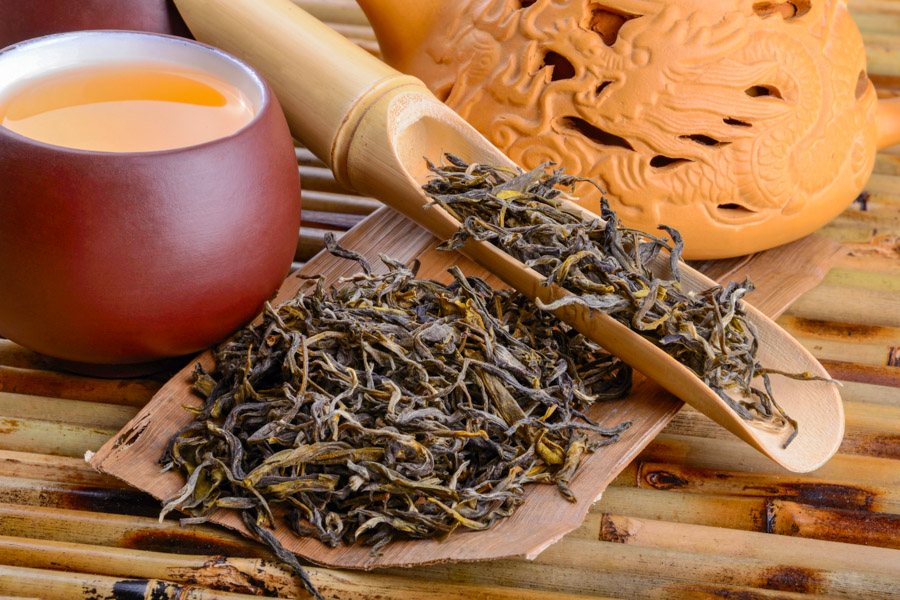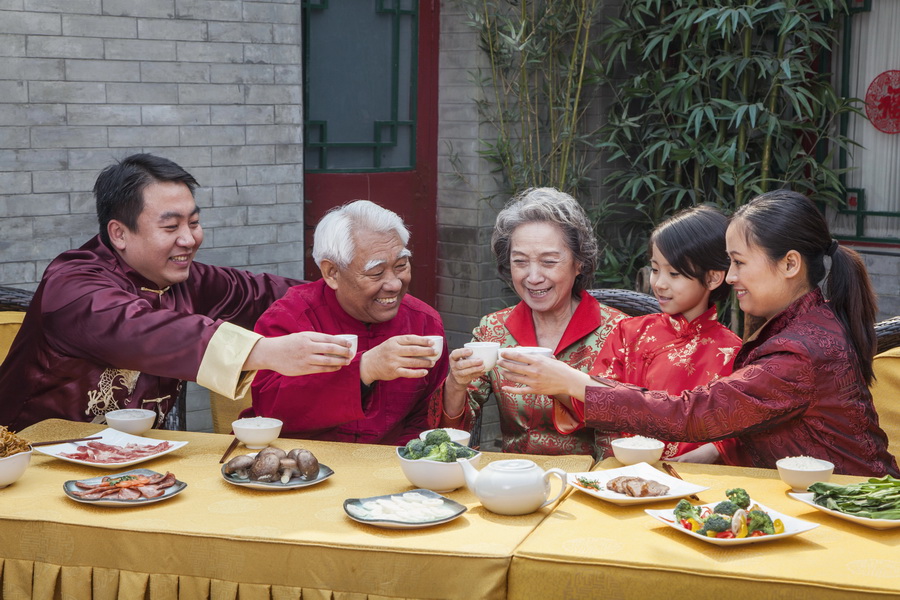
The Chinese tea tradition is a cornerstone of national identity and a key element of the Chinese culture. The cultivation of bushes, the harvesting of leaves, the fermentation processes and the art of brewing are all rooted in time-honoured practices that remain deeply relevant today. For centuries, tea has served not only as a beverage but also as a means of attaining harmony and inner balance. The tea ceremony has evolved into a meditative ritual that honours each gesture and the finest of details.
China is renowned for its remarkable diversity of teas (茶 chá) – green, yellow, white, black, oolong and pu-erh. Each variety carries the vitality of fertile soil and reflects the distinct climate in which it was grown. The scenic plantations across the mountains of Yunnan, the hills of Fujian and other regions turn travel in China into a reflective exploration of tea culture. In this guide, we examine the roots of the tea tradition, the principles of the ceremony and the main tea types, while introducing the regions where this practice continues to thrive.
Become Fascinated with the History of Chinese Tea
Tea has been used as a healing and tonic drink for over 4,000 years in southwestern China. It is believed that early inhabitants of the Yunnan and Sichuan regions consumed leaves from wild mountain bushes, brewing them in hot water to create fragrant infusions. Long before it became a widely consumed beverage, tea was used medicinally by the nobility as early as the Han dynasty (206–220 AD). Chinese Buddhist monks were the first to incorporate it into daily rituals, as the caffeine in the leaves helped maintain focus during extended meditation sessions.
Tea gained widespread popularity under the Tang dynasty (618–907 AD). The expansion of tea plantations made the trade increasingly profitable and helped strengthen ties between regions of China and neighbouring countries. Dried leaves and tightly compressed bricks were carried by caravan to remote areas of Central Asia and Tibet along the Silk Road.
A distinctive tea culture emerged in Fujian Province during the Song dynasty (960–1279). Here, a specialised method of processing leaves developed: the tea was boiled, compressed into blocks, and infused with incense. By this time, tea had become so ingrained in daily life that it was considered one of the seven essential household items, alongside rice, oil, salt, soy sauce, vinegar and firewood.
The Ming dynasty (1368–1644) saw the widespread adoption of steeping dried tea leaves in boiling water. Teapots made from heat-retaining Yixing clay also became popular. Over time, a refined tea ceremony evolved across various regions of China – complete with rituals governing the quantity of tea and water, steeping duration, and the proper sequence of tools. This ceremonial approach came to be known as Gongfu tea (工夫茶), meaning tea prepared with skill and dedication.
In modern times, alongside traditional ceremonies, tea is often brewed casually in a cup as an everyday drink. Cold-brewed tea – prepared by infusing leaves in cold water over several hours – is also gaining popularity. Today, tea continues to play a central role in Chinese life, seamlessly blending ancient customs with a modern rhythm.
Select Your Preferred Chinese Tea
Chinese tea is traditionally divided into six main types, each distinguished by its degree of fermentation and processing methods: green, black, oolong, white, yellow and pu-erh. Though all originate from the same plant, Camellia sinensis, their flavour and aroma are shaped by the natural conditions of the growing region and the specifics of production.
Green tea preserves its fresh character and light grassy notes through minimal processing. Celebrated varieties such as Longjing from Hangzhou and Biluochun from Jiangsu Province are known for their clear infusion and delicate fragrance.
Black tea, known in China as hong cha, undergoes full fermentation, resulting in a deep colour and mellow, sweet undertones. Notable examples include Qimen from Anhui and Dianhong from Yunnan.
Oolong tea lies between green and black teas in terms of fermentation. Its partially oxidised leaves produce a layered bouquet with floral and fruity nuances. Standout varieties include Tieguanyin from Anxi and Da Hong Pao from the rocky cliffs of Wuyi Mountain.
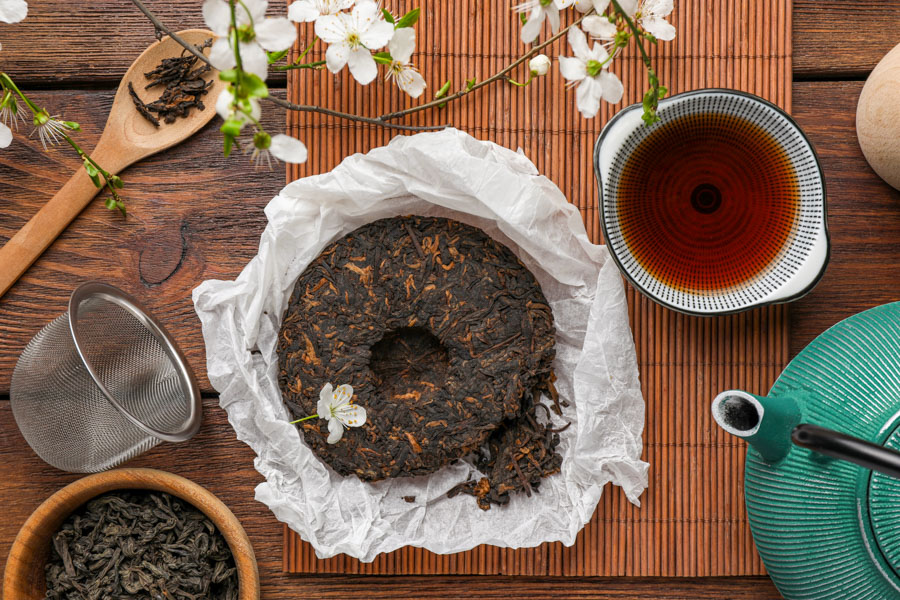
White tea is processed with great simplicity – the leaves are gently withered and dried. This preserves their subtle flavour and soft texture. Fujian Province is home to its best-known types, including Bai Mudan and the refined Silver Needle.
Yellow tea is rarer and appreciated for its smoothness and gentle aroma, achieved through a unique technique of lightly smouldering the leaves after roasting.
Pu-erh follows a different path, undergoing prolonged ageing and fermentation. Its earthy depth and dense infusion are hallmarks of Yunnan Province, where this tea has been crafted for generations.
Herbal teas display unique flavours and health benefits. These infusions - including chrysanthemum, hibiscus, and goji berry - reflect the rich mosaic of local botanicals and traditional practices across various regions.
Experience the Essence of Chinese Tea Ceremony
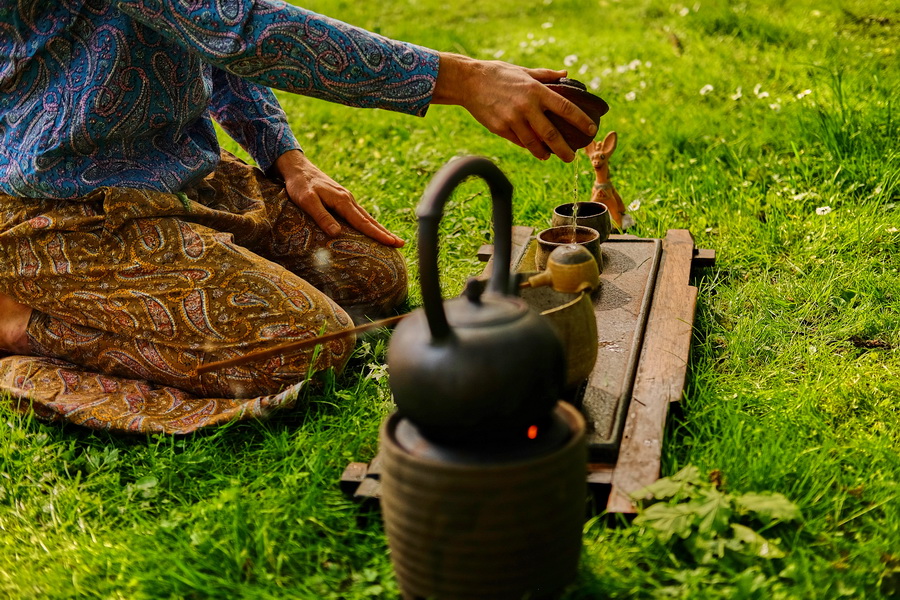
Traditional Chinese tea brewing follows a series of simple, thoughtful steps that are easy to learn and make it possible to enjoy a flavourful, aromatic drink each day.
Before the ceremony begins, all utensils are rinsed with hot water. This step not only ensures cleanliness but also warms the vessels, helping the tea to steep more evenly. Dry leaves are then added to the warmed teapot or gaiwan, typically filling about one-third of its volume. This allows the leaves to unfurl fully when exposed to heat and moisture. A brief initial infusion, known as the “awakening of the tea”, is used to rinse the leaves and release their aroma.
For the main infusion, attention to water temperature and steeping time is essential. Green teas require lower temperatures, while oolongs and pu-erhs can tolerate near-boiling water. The tea is then poured into a serving pitcher to harmonise the flavour before being distributed into small cups. To respect the etiquette, the host presents each bowl with both hands – a gesture of respect and hospitality.
The same leaves can be brewed multiple times, revealing new layers of taste, aroma and colour with each steeping. Tea drinking becomes a meditative act – a quiet ritual of awareness and inner stillness, where the meeting of water and leaf reflects the pursuit of calm and clarity.
Explore Chinese Tea Culture Through Philosophy, Art, and Traditions

In Chinese culture, tea is far more than a beverage – it is a layered symbol interwoven with philosophy, aesthetics and daily life. The rituals of the tea ceremony reflect a central tenet of Taoist thought: harmony between human beings and the natural world. In Buddhism, tea is valued for aiding concentration, while the act of tea preparation and serving embodies the reverence and respect that are central to Confucian ethics.
Tea has long inspired Chinese poets and is a recurring theme in literature. The Tang dynasty poet Bai Juyi (白居易) wrote of tea as a vital part of his daily life and a quiet companion to his afternoon hours. In the 8th century, the scholar Lu Yu (陆羽) composed The Classic of Tea (Chá jīng, 茶经), a landmark treatise detailing the cultivation, harvesting, preparation and brewing of tea, along with its historical and cultural significance.
Tea culture also features prominently in Chinese painting. As early as the Five Dynasties and early Song period, artists depicted tea in both imperial banquets and scenes of everyday life. A notable example is the painting Xiao Yi Acquiring the “Orchid Pavilion Preface” (《萧翼赚兰亭图》) by Yan Liben (阎立本), in which the brewing of tea marks a gesture of honour toward a valued guest during the exchange of a treasured calligraphic scroll.
Tea continues to play a central role in Chinese family rituals, particularly during Chinese New Year (春节, Chūn Jié). In Guangdong, tea houses open early to serve hot tea with dim sum (点心) – a combination symbolising joy and prosperity. In Zhenjiang, people drink Yuan Bao Cha (元宝茶), a green tea with fruit believed to bring luck and wealth. In Fujian, traditional infusions such as Cha Mi Shui (茶米水) and Nian Cha (年茶) are offered to guests and ancestral spirits at the family altar.
Tea, in all its forms, permeates Chinese culture – from philosophy and literature to visual arts and household rituals – linking age-old legends with the intimate gestures of everyday life.
Enjoy the Health Benefits of Chinese Tea
In Chinese culture, tea is closely tied to health and is deeply rooted in traditional Chinese medicine. Contemporary research supports its benefits: regular consumption of Chinese tea may help support the immune system, regulate metabolism, lower cholesterol and blood sugar levels, and promote cognitive and cardiovascular health. Green tea, rich in antioxidants, is especially noted for its role in reducing the risk of chronic conditions such as diabetes and cardiovascular diseases.
Traditional Chinese herbal teas, or tisanes, also contribute to overall well-being. These caffeine-free infusions are used to aid digestion, relieve stress, reduce inflammation and support skin health. Common ingredients in these blends include ginseng, chamomile, lavender, echinacea and other botanicals valued for their therapeutic properties.
In recent years, wellness retreats centred on tea culture have gained popularity across China. These resorts offer programmes that combine tea ceremonies with meditation, physical activity and dietary practices, all aimed at restoring balance and enhancing health. At Six Senses Qing Cheng Mountain in Sichuan Province, guests can take part in qigong sessions or acupuncture treatments and enjoy tea rituals in a serene setting. In the mountains of Fujian, the Puyu Retreat invites visitors to engage in multi-day programmes where they learn to gather and use medicinal herbs alongside guided tea experiences. Located in tranquil natural surroundings, these tea-focused retreats promote calm, mindfulness and physical renewal.
Acquire Unique Pieces of Chinese Tea Craftsmanship
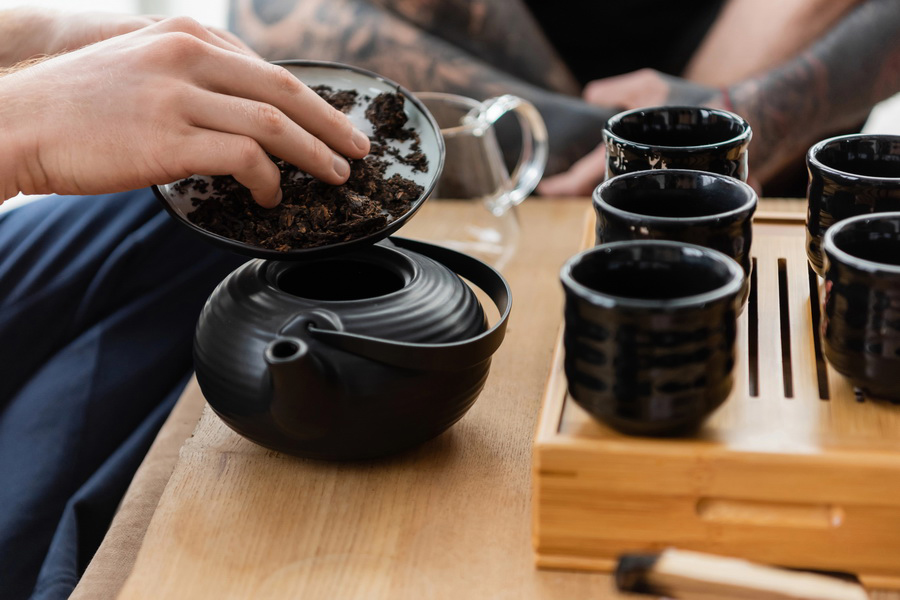
In Chinese tea culture, utensils and accessories are as integral as the tea itself. Each component of the tea set serves not only a practical function but also often stands as a work of art that reflects the philosophy and refined aesthetics of tea drinking. Essential items in the traditional tea ceremony include the teapot (chahu, 茶壶), fairness pitcher (chahai, 茶海), tea cups (chabei, 茶杯), tea tweezers (chajia, 茶夹), tea leaf holder (chahe, 茶荷), and tea strainer (chalu, 茶滤). A ceramic lidded bowl (gaiwan, 盖碗) is frequently used for brewing, while all the implements are arranged on a tea tray (chapan, 茶盘) – a wooden box with slits that serves as the central platform of the ceremony.
The visual and tactile appeal of these accessories reflects the artistry of craftsmen from across China. Their skill in shaping clay, wood and metal elevates the tea ritual into an experience that is both sensory and contemplative. The city of Yixing (宜兴) is particularly renowned for its artisans who work with purple clay (zisha, 紫砂). These teapots are left unglazed, allowing them to gradually absorb the essence of the teas brewed within. Over time, they develop a so-called “tea memory” that subtly enhances the flavour of each new infusion.
Travelling through China offers the chance to discover exceptional handmade pieces in local markets and antique shops. In Beijing, the historic Liulichang (琉璃厂) quarter is known for its elegant tea bowls, pitchers and collectible accessories. In Shanghai’s Jiading district, the private Sihai Teapot Museum (四海壶具博物馆) includes both an exhibition space and a workshop, where visitors can learn about and purchase purple clay ware. Traditional teahouses on quiet streets also offer a welcoming setting to experience a ceremony and select handcrafted pieces for your own tea ritual.
Culinary Pairings with Chinese Tea: Elevate Your Dining Experience
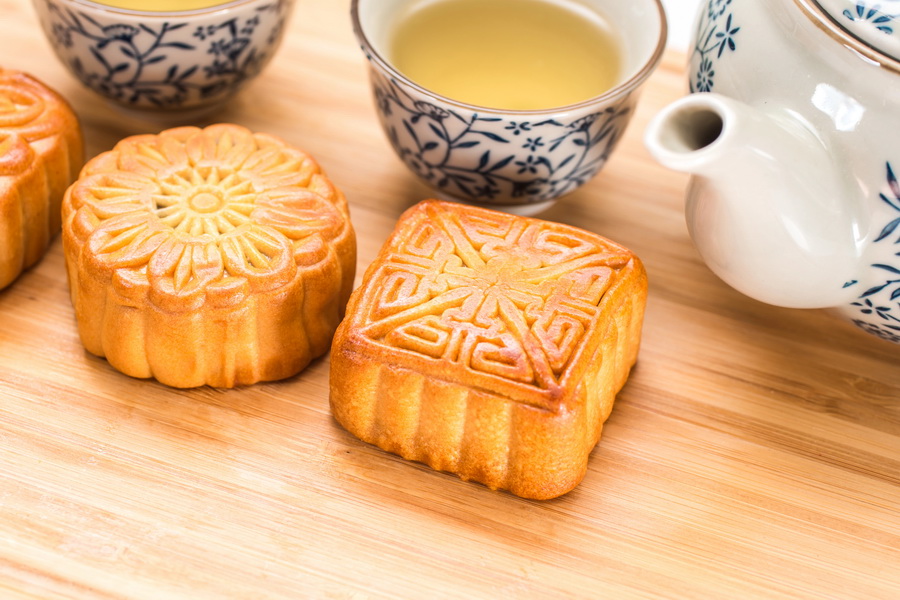
Chinese tea is not only a beverage in its own right but also a refined companion to desserts, pastries, light snacks and even main courses. Its complex flavour profile opens the door to original pairings that reveal unexpected layers and subtle contrasts.
Delicate green teas, with their faintly sweet and nutty notes, pair well with seafood, salads, chicken and vegetable dishes. The soft aroma of white tea complements fresh fruit, light pastries and mild cheeses. Rich, full-bodied oolongs match well with poultry, fish and spiced meats, while smooth black teas enhance the depth of bold desserts and savoury dishes. The dense character of pu-erh makes it a fitting match for dark chocolate and dried fruits, while floral and herbal infusions pair elegantly with nut-based cookies or creamy sweets.
Beyond pairing, tea can serve as a versatile ingredient that transforms the flavour of familiar recipes. Smoked Lapsang Souchong (正山小种), for instance, is often used in marinades and sauces – its bold, smoky aroma brings depth to dishes such as duck or beef. Green Longjing (龙井茶) adds freshness and herbal softness to vegetable dishes and seafood broths. Fragrant jasmine tea (茉莉花茶) lends its gentle sweetness to creams, mousses and ice creams, enhancing desserts with its distinctive floral profile.
At some of China’s leading restaurants, tea pairings have become an integral part of the fine dining experience. At Cai Yi Xuan, the one-starred Michelin restaurant of the Four Seasons Hotel in Beijing, a tasting menu features a selection of teas such as West Lake Dragon Well and Xiao Lan Hua, each thoughtfully paired with complementary dishes that bring out the nuances of both food and tea. In Shanghai, the Shangri-La Qiantan restaurant hosts themed events where Chinese teas are paired with delicate snacks and European-style desserts – each course a refined exploration of taste and aroma.
Visit China’s Four Great Tea Regions, Among Others

A journey through China’s tea-growing regions offers a chance to witness how tea is cultivated and processed. In Fujian province, you’ll find Tieguanyin (铁观音) oolong plantations, scenic farms and mountain paths with sweeping views of the valleys. This area is part of the South China (Huanan) region, known for its subtropical climate and diverse tea offerings. In Yunnan, a significant region on the southern Silk Road trade routes, ancient pu-erh fields thrive among centuries-old trees, preserving traditions passed down through generations. These fields are mainly concentrated in the Southwest (Xinan) tea region of Yunnan, particularly in areas such as Xishuangbanna, Pu’er, and Lincang, where ancient tea trees still grow on mountain slopes. To the south of the Yangtze River lies the Jiangnan tea region, where provinces such as Zhejiang, Anhui, and Hunan are celebrated for their high-quality green and black teas, including the famous Longjing.
Nestled to the north of the Yangtze River, Jiangbei offers a distinct tea experience characterised by its colder climate and shorter growing season. The provinces of Henan, Shaanxi, and Shandong feature lush tea fields where renowned green teas like Xinyang Maojian and Shaanxi Green Tea flourish. Jiangbei presents an intriguing alternative for tea enthusiasts eager to explore a lesser-known yet compelling facet of Chinese tea culture.
For travellers seeking a more active experience, hiking through tea-covered hills and joining seasonal harvests offer a hands-on connection to the land. In areas such as Xishuangbanna, farmers welcome visitors to participate in picking, sorting and drying the leaves. After a day in the fields, guests often stay in family-run guesthouses where home-cooked meals are paired with evening tastings of freshly brewed tea.
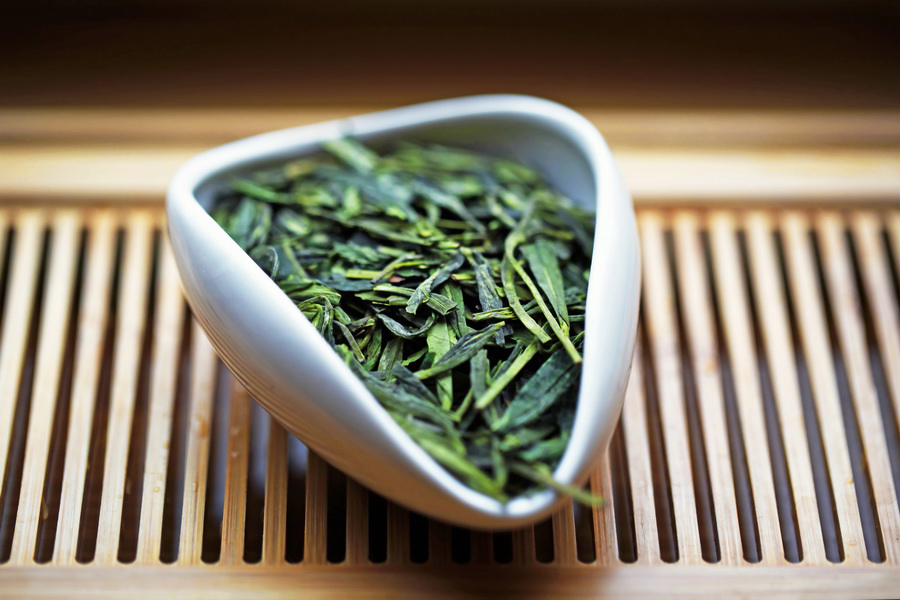
Those eager to explore tea culture in depth can choose themed itineraries that combine plantation visits with brewing workshops and culinary classes. The Wuyi Mountains (武夷山), listed as a World Cultural and Natural Heritage Site by UNESCO in 1999, are particularly renowned for these immersive experiences, offering access to rare tea varieties and nearby nature reserves.
To enrich your journey, take time to engage with local tea masters. In small shops, owners frequently invite visitors to sit and sample teas from different harvests while sharing stories of their origins and brewing techniques. Genuine interest and respect for tradition are always appreciated – here, every cup is valued for its flavour and the story behind it.
The world of Chinese tea comes alive through travel: in mist-shrouded plantations scented with fresh leaves, in quiet exchanges with artisans whose gestures reflect years of practice, in a single cup that unfolds a spectrum of flavours. Each region holds its own customs and secrets, and every encounter adds to a living cultural tapestry. It’s in these quiet, attentive moments that the essence of China reveals itself – rooted in heritage and guided by care.


